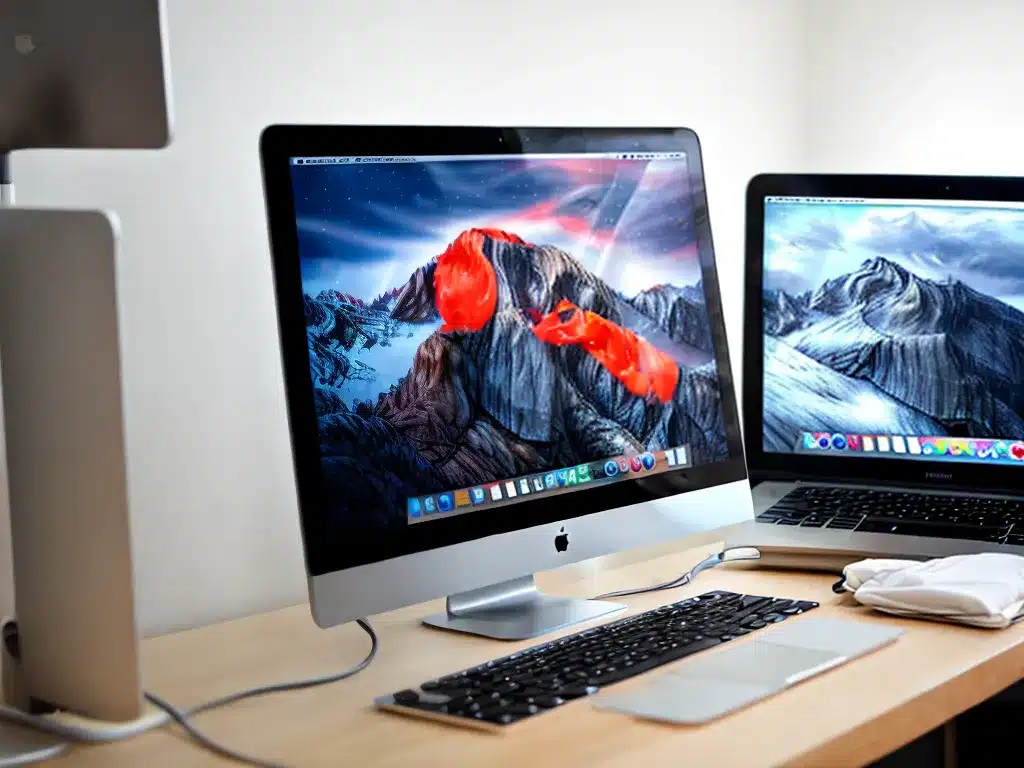
A slow and sluggish Mac can be frustrating. As a Mac user myself, I know firsthand how a lagging computer can hamper productivity and lessen the enjoyment of using an otherwise excellent machine. The good news is that with some tweaking and maintenance, you can often speed up Mac performance dramatically. Here’s my guide to speeding up a sluggish Mac.
Clean Up Your Mac’s Hard Drive
A full hard drive is one of the most common reasons for a slow Mac. When your drive starts to fill up, your Mac has less room to manage and organize files efficiently. Follow these tips to clean up space:
-
Use Disk Utility to find and delete large unused files. Sort your drive by file size to easily spot mammoth files you don’t need.
-
Delete old backups from Time Machine that you don’t need anymore. Time Machine files can take up huge amounts of space.
-
Remove unused apps by dragging them from Applications to Trash. Delete any associated files too.
-
Store files externally. Move your photos, videos, music, and infrequently used files to an external drive to free up internal space.
-
Empty the Downloads folder. Download folders tend to fill with unused installers and archives. Delete them.
-
Clear caches. Maintenance scripts like CCleaner clear out cached and temp files.
Upgrade Your Hardware
Upgrading certain hardware components can provide a big speed boost. Consider upgrading:
-
RAM. More RAM allows your Mac to access data faster. Check Activity Monitor to see if you need more.
-
SSD storage. An SSD processes data much faster than a traditional hard drive. Replace your internal drive or use an external SSD.
-
Processor. A faster multi-core processor will allow you to multitask and process intensive tasks quicker.
-
Wireless card. If you have an older Mac, updating to a 5Ghz 802.11ac card can greatly improve Wi-Fi speeds.
Tune Up System Settings
Adjusting some of your system settings can optimize performance:
-
Reduce transparency. The transparency effect in macOS can be taxing. Turn it off in System Preferences.
-
Limit animations. Disable fancier animations like Dock zooming for snappier response.
-
Turn off Dashboard. Dashboard is deprecated. Disable it in System Preferences.
-
Uninstall antivirus. macOS has strong security built in. Third party antivirus can slow things down.
-
Change indexing. Limit Spotlight indexing to system drives for faster searching.
-
Disable Handoff. Handoff lets you sync devices but can drain resources.
Reset Your Mac
If your Mac is still slow, try resetting it:
-
Restart your Mac properly at least once per week to clear memory.
-
Reset NVRAM/PRAM. This resets your Mac’s memory stores and can resolve glitches.
-
Perform an SMC reset. The system management controller controls hardware – reset it.
-
Restore from a Time Machine backup. This will wipe your drive and restore optimal conditions.
Avoid Issues in the Future
Implement some habitual changes to keep your Mac running smoothly:
-
Keep on top of updates to macOS, apps, drivers and security. Updates often include speed fixes.
-
Only use trusted apps from the App Store. Some third party apps are poorly optimized hogs.
-
Close unused apps instead of just minimizing them to free up resources.
-
Use activity monitoring tools to see what’s slowing you down. Then disable heavy processes.
-
Reboot regularly so your Mac starts fresh, especially before heavy tasks.
With some tweaking, cleaning, and vigilant maintenance habits, you can restore the pep and speed you expect from your Mac. Don’t tolerate a sluggish computer – implement these fixes to keep your Mac running like new.












